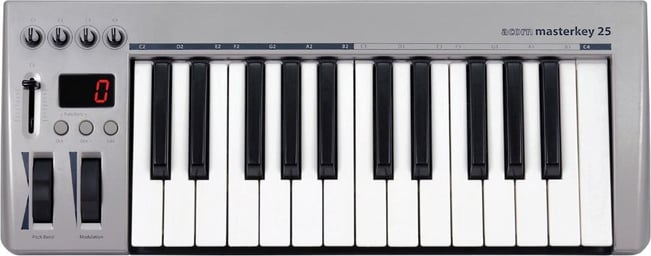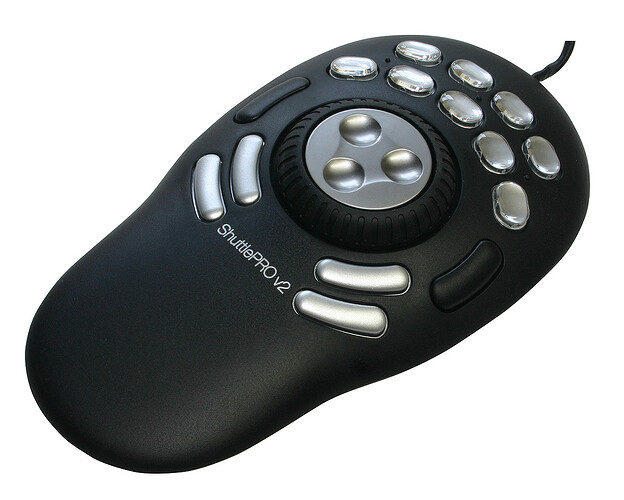I forget everything I think of or read, so I write it down but then I have a habit of losing written notes, so I’m going to start keeping track of stuff in this forum in the hopes that I might remember and other people might find it useful. If I come across as authoritative, it’s because that’s how I write notes to myself, and it helps me to learn. The reality is I know nothing, and you’ll gather that from how simplistic some of the points are. Issues are in italics
Non-mouse input devices
- I’ve tried to learn Renoise’s keyboard workflow, which seems much quicker than using the mouse, but nearly all the shortcuts are just a bit annoying for me. Here is my (possibly ripped off from casiino now he mentions it) slightly alternative approach, which might seem a bit backwards but is working well and I’m finally, gradually, getting quicker:
a) Delete all keybindings
b) Start working on a track
c) As soon as you need to do anything, try to find it in the keybindings list and assign to something convenient. Make a note of the keybinding, then never use the mouse to do that thing
d) If you can’t find it in the keybindings, see if there’s a tool that does it, download and assign to a convenient keybinding. Here is a thread detailing lots of related tips and tools
e) Just keep repeating and refining this until you’ve developed your own idiosyncratic system which fits your way of working. You’ll memorise things as you go and all the most common things will have the most basic shortcuts.
- Sometimes there’s something you do at the beginning which you only do once - it gets a high-ease shortcut which it doesn’t really deserve, so in that case you sub it out for a more common action.
- I guess learning to script so you can make your own keybinding functions would be the next step but I have literally no idea how to do this.
- MIDI controller input lets you make more expressive note entries in less time than the computer keyboard, due to both note and velocity being entered simultaneously. I like this little-known, cheap and cheerful ‘acorn masterkey 25’ - light-ish, decent-sized keys and very little wasted space, plus a few useful controllers:

I find these MIDI assignments useful:
Fader to gainer effect on master track, pre-limiter
Knob 4 to step length (a bit finnicky but better than nothing - sometimes it’s hard to get it to settle on exactly the right value, so the workflow improvement factor is lost)
Knob 3 to BPM - Renoise doesn’t write this to automation so if you want that, assign to a hydra routed to BPM. Though I find that it’s very easy to mess this up and end up making loads of accidental BPM modulations.
Knob 1 and 2 - whatever, assign freely for recording automations other than CC1 and PB
- The masterkey is a bit big to always carry around with you. Korg microkey is a smaller option which still features proper mod and pitch wheels, but no other knobs or faders.
- It would be useful if Renoise allowed transformation of incoming MIDI so that 0-127 could be mapped to a useful editstep range e.g.0-32, maybe xRules could facilitate this? The better solution would be to be able to reprogram the controller, but you can’t, and the controllers I’ve seen that do have this ability are all unacceptably large.
-
Contour Multimedia Controller Pro / Contour Shuttle Pro.
This is a great product - moderately pricey but available at about 40-60% rrp on ebay. Mine was about £50. Jogwheel, shuttle and buttons all freely user-assignable. Solidly-built and way more flexible than a MIDI controller for functions other than note entry and recording automation.- Assign keypresses to the transitions between shuttle positions rather than the positions themselves to avoid weird behaviour repeating keypresses as you release the shuttle wheel. Jogwheel works as you’d expect. I’ve assigned jog to up/down and shuttle to right/left
- Shuttle only has 7 positions in each direction, so I’ve assigned next/previous track to right/left rather than next/previous column, which I’ve set to ctrl-right/left.
- I’ve assigned all the lower buttons to modifiers or modifier combinations to use in conjunction with the jog, shuttle and middle/upper buttons for a total of 5x13=65 possible functions. Optimum modifier/button combo would be 8 modifiers with 9 button for 9x9=81 possible functions.
- Value Stepper tool is a great use of the modifiers + jogwheel behaviour.
- It says it’s plug and play but it seems to actually need driver installation
- I’d rather the shuttle was just a concentric 2nd jogwheel but it isn’t, so there
-
You can automate keypresses in Renoise using midi2qwerty16 from the pizmidi collection. Use cases include:
- making a video which features changes between views at particular moments
- some kind of generative application using row probabilities, phrases and note entry
- I don’t know what else, but there seems to be a lot of potential for some quite fun stuff
- midi2qwerty16 only works for me when the native plugin editor window both has focus AND I’ve clicked around in the manual value entry fields, which limits its potential somewhat.
- Unpinning the editor and moving it to a 2nd monitor, then keeping it focused, helps
- I don’t think this happens in every DAW so perhaps it’s something to do with Renoise’s bridging for 32bit VSTis or Renoise blocking the generated keypresses in some way. If you didn’t need the window open and weirdly ‘active’ there’d be a lot more potential here.
There, I hope that a) reminds me of some stuff, and b) is of use to someone else. Cheers!
